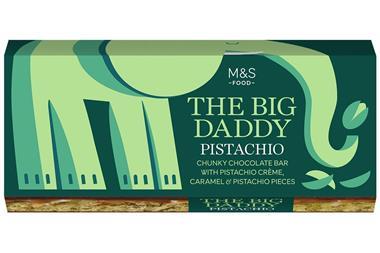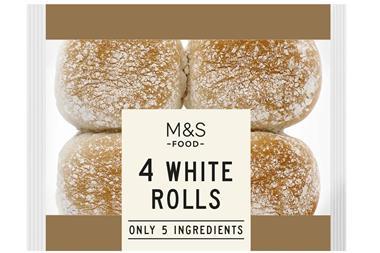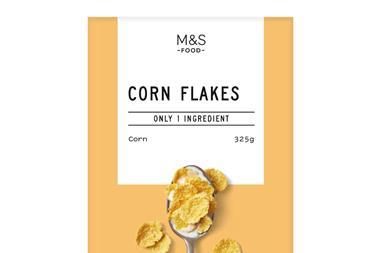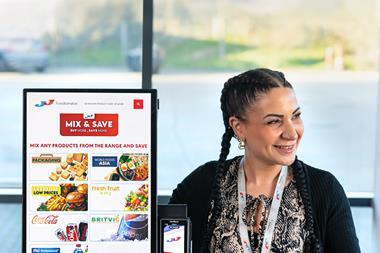>>let’s get close to farmers - Paul Willgoss, head of agriculture and technical manager of protein foods, M&S
At Marks & Spencer our customers’ interest in where their food comes from and how it is produced has never been greater. Who better to communicate this than the farmers and growers?
Following a suggestion from them, we have developed the concept of M&S’s farmers regularly meeting our customers in some stores. This autumn thousands of our customers will experience the passion of our farmers and growers for what they do as we roll out the Meet the Farmer programme.
A viable British agricultural industry is of central importance to us. Our partnerships with processors, farmers and growers are typically long term, often spanning generations. All our beef, for example, is British (a claim very few retailers can make) and our relationship with some suppliers, such as Scotbeef and the beef farmers who supply them, goes back over 40 years.
This is a challenging time for everyone in UK agriculture. All of us will have to develop new approaches to the traditional business structures we have been used to. But the opportunities these changes offer are very exciting, both for us and for those farmers and growers with whom we work. None of us believe the next few years will be easy, but we welcome the new possibilities that will emerge. Let me explain why.
M&S restricts its range of food items to those where we can demonstrate a major quality difference. We work with an élite nucleus of British farmers and growers who share our view of the market and our passion to produce and sell the best British food. Creating significant eating-quality difference begins on the farm with the fundamental transaction between the M&S customer and the UK producer.
The more direct and transparent the relationship between our customers and the farmers, the better it will be. Of course, details of the new agricultural support arrangements are still evolving, but the main thrust is clear. De-coupling the movement of subsidies away from individual products and into a single farm payment offers a once-in-a-generation opportunity to bring the customer and farmer together in a new direct way undistorted by subsidy protocols.
My vision of the perfect supply chain is not the old straight line with farmers at one end and customers at the other with a series of potential hurdles in between. Increasingly, our supply chains are becoming circular,
with farmer, customer and processor in constant two-way communication.
With my horticultural background let me signal a second reason why I welcome the move for farmers to produce food for customers, rather than farm for subsidies. The success of our business in strawberries stems from the continual development of new varieties, capped in recent years by the brilliant Jubilee variety, developed by skilled growers and breeders over several seasons.
The same is true of our English cherries and tomatoes and indeed of our poultry business with its new hybrids and husbandry techniques.
Now the same opportunity is opening up for beef and lamb. Can we not between us set out to identify the best eating breeds, the ones that our customers prefer? Indeed, might we not within those preferred breeds and crosses locate those individual bulls and rams with the propensity to ‘score highest’ where it matters - on our plates.
The sciences of livestock breeding and DNA traceability will soon make this vision realisable. Powerful IT already allows us to assemble and disseminate data around the supply chain at lightning speed.
All of this does not act as a panacea for the whole of British agriculture. But, for those whose motivation is to produce élite food ranges that represent the best of what these islands can produce, I hope they are equally excited at the prospect ahead.
At Marks & Spencer our customers’ interest in where their food comes from and how it is produced has never been greater. Who better to communicate this than the farmers and growers?
Following a suggestion from them, we have developed the concept of M&S’s farmers regularly meeting our customers in some stores. This autumn thousands of our customers will experience the passion of our farmers and growers for what they do as we roll out the Meet the Farmer programme.
A viable British agricultural industry is of central importance to us. Our partnerships with processors, farmers and growers are typically long term, often spanning generations. All our beef, for example, is British (a claim very few retailers can make) and our relationship with some suppliers, such as Scotbeef and the beef farmers who supply them, goes back over 40 years.
This is a challenging time for everyone in UK agriculture. All of us will have to develop new approaches to the traditional business structures we have been used to. But the opportunities these changes offer are very exciting, both for us and for those farmers and growers with whom we work. None of us believe the next few years will be easy, but we welcome the new possibilities that will emerge. Let me explain why.
M&S restricts its range of food items to those where we can demonstrate a major quality difference. We work with an élite nucleus of British farmers and growers who share our view of the market and our passion to produce and sell the best British food. Creating significant eating-quality difference begins on the farm with the fundamental transaction between the M&S customer and the UK producer.
The more direct and transparent the relationship between our customers and the farmers, the better it will be. Of course, details of the new agricultural support arrangements are still evolving, but the main thrust is clear. De-coupling the movement of subsidies away from individual products and into a single farm payment offers a once-in-a-generation opportunity to bring the customer and farmer together in a new direct way undistorted by subsidy protocols.
My vision of the perfect supply chain is not the old straight line with farmers at one end and customers at the other with a series of potential hurdles in between. Increasingly, our supply chains are becoming circular,
with farmer, customer and processor in constant two-way communication.
With my horticultural background let me signal a second reason why I welcome the move for farmers to produce food for customers, rather than farm for subsidies. The success of our business in strawberries stems from the continual development of new varieties, capped in recent years by the brilliant Jubilee variety, developed by skilled growers and breeders over several seasons.
The same is true of our English cherries and tomatoes and indeed of our poultry business with its new hybrids and husbandry techniques.
Now the same opportunity is opening up for beef and lamb. Can we not between us set out to identify the best eating breeds, the ones that our customers prefer? Indeed, might we not within those preferred breeds and crosses locate those individual bulls and rams with the propensity to ‘score highest’ where it matters - on our plates.
The sciences of livestock breeding and DNA traceability will soon make this vision realisable. Powerful IT already allows us to assemble and disseminate data around the supply chain at lightning speed.
All of this does not act as a panacea for the whole of British agriculture. But, for those whose motivation is to produce élite food ranges that represent the best of what these islands can produce, I hope they are equally excited at the prospect ahead.



















No comments yet